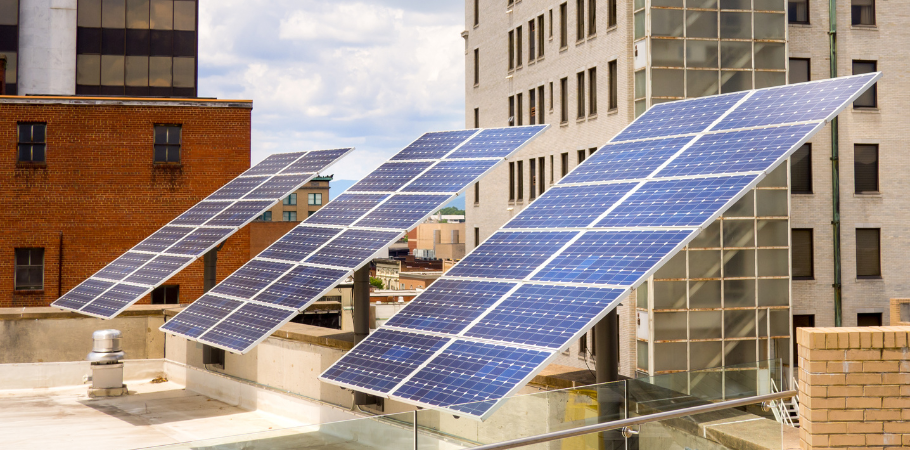
In the future, the consequences of climate change will become very unpredictable, affecting people’s lives. Monitoring and managing carbon budgets is an important part of global efforts to reduce greenhouse gas emissions and prevent climate change.
Consequences of Climate Change
Perhaps many people feel indifferent to the task of responding to climate change and think that it is the responsibility of the next generation or of developed countries. However, few people realize that if each person does not act today, the consequences will be very serious and unpredictable.
For example, global warming causes ice melting, causing sea level to rise, causing floods, high tides, shrinking land area, and landslides in coastal areas. Moreover, it can lead to more extreme weather patterns, such as hurricanes, floods, droughts, and heat waves. These disasters can cause damage to people and property, as well as disrupt economic activity.

Climate change can lead to environmental disasters, such as biodiversity loss, forest fires, and the depletion of coral reefs. In addition, it also affects human health, such as increasing the risk of heart disease, stroke, cancer, and respiratory diseases. Rising temperatures can also exacerbate mental health problems.
Carbon Budgets Concept
A carbon budget is a concept that describes the amount of greenhouse gases, especially CO2, that can be emitted without causing global temperatures to rise beyond a certain level. The Paris Agreement sets a goal of keeping average temperature rise below 2 degrees Celsius above pre-industrial levels, and prioritizing levels below 1.5 degrees Celsius. Monitoring and managing carbon budgets is an important part of global efforts to reduce GHG emissions and prevent climate change.
The world allocates carbon budgets to countries and from countries to businesses. They divide carbon budgets between different countries and regions based on factors such as population, emissions history, and affordability.

How do Carbon Budgets Work?
Carbon budgets seek to balance an emission increase in one sector, such as agriculture, with corresponding reductions in another.
They can help limit global warming because carbon budgets link the rate of emissions to the additional rise in temperature. Thus they can offer a stepped approach to reaching climate targets. Also, they help gauge the effectiveness of GHG-reduction measures, such as using renewable energy sources, and take account of mitigation factors like carbon capture initiatives or reforestation schemes.
In that way, they open a window on how close a country is to reaching net zero. Some countries, including the UK and Japan, have set legally binding carbon budgets.
The Progress over the World
The IPCC report found emissions are increasing at about half the rate of the decade earlier. And some countries are using their carbon budget to help chart a long-term course centered on sustainability.
For instance, Costa Rica’s budget includes measures to ensure investment is funneled to sustainable public transport. While Fiji, an island chain vulnerable to rising sea levels, is targeting the restoration of its ecosystems.
There’s also debate about which countries should set the toughest budgets; should the biggest emitters shoulder most responsibility, or should it be shared?
The UK has met its Third Carbon Budget – for the period 2018 to 2022 – with a surplus.
However, the country’s Climate Change Committee (CCC), an independent body which advises on emissions targets, has warned the government not to carry forward the surplus to “loosen later carbon budgets”.
The Climate Change Act 2008 set out carbon budgets as the legal targets for UK greenhouse emissions over a five-year period.
The Relationship between Carbon Budgets and Businesses
A carbon budget is similar to a normal financial budget of a business or country. How much we have discharged, how much we have left and how to achieve the goals set by the government are the questions that plague current business owners.
Facing the risk of new regulations on climate change, besides accepting the payment of fines or taxes, businesses can:
- Perform carbon accounting (Carbon Accounting / GHG Accounting): After carrying out a GHG inventory, businesses will understand the impact of their production activities, thereby promptly planning the transition.
- Transition to renewable energy sources: Renewable energy is becoming cheaper and more efficient. Businesses can transition to renewable energy by installing rooftop solar panels, buying electricity from renewable energy suppliers, or investing in renewable energy projects.

- Improved energy efficiency: Businesses can reduce GHG emissions by improving energy use in buildings, factories, and vehicles. This can be done by better insulation, using energy-efficient equipment, and optimizing production processes.
- Invest in new technologies: New technologies, such as carbon capture and storage, can help reduce businesses’ emissions. This is a technology that allows carbon to be separated from emissions and stored underground. It usually consists of three main stages: capture, transport, and storage.
- Purchase of emission reduction credits (carbon credits): Carbon credits are a type of certificate that represents one ton of carbon dioxide or other GHG emissions that are removed from the atmosphere. They use carbon credits in GHG emission reduction programs, such as the Clean Development Mechanism (CDM) of the United Nations Framework Convention on Climate Change (UNFCCC). They sell and buy carbon credits on the free market. Businesses and organizations can purchase carbon credits to offset their emissions. This can help them meet their greenhouse gas emissions targets or comply with environmental regulations.
Conclusion
Obviously, green transformation is not a simple process because it requires in-depth knowledge and experience from leading experts. Every business needs to be aware and form responsibility related to environmental protection right now. The efforts of each individual, each organization, each country will contribute to creating a better future for our planet.
See more: Greenhouse Gas Emissions: How to Measure and Calculate


